UC Blogs
One of the World's Largest Flowers
A weekend trip to San Francisco brought us to the Academy of Science in Golden Gate Park, where we saw a replica of one of the largest flowers in the world, the Rafflesia arnoldii. This flower grows in the rainforests of Borne and Sumatra.
Rafflesia arnoldii, can grow to 3 feet across and 7-15 feet tall, it is a reddish brown with white spots. This is a parasitic plant with no leaves, stems or roots. It attaches to the host plant vine Tetrastigma for water and nutrients. It also smells like rotting meat when in bloom. The rotting meat smell attract the carrion-fly with the pollen attaching itself on the back of this fly. Scientist say that they don’t believe that the carrion-fly helps much with pollination of this flower. This flower is either male or female and is almost extinct due to the difficulty in pollination and the disturbance of tourist to this area.
After the visit to the Academy of Science we went to the beautiful dahlia dell garden in the park. Where dahlia’s from dinner plate size to as small as buttons can be seen. Soft , brilliant, multi-colored dahlias, red and yellow together and a bright white with the name of “porcelain” Dahlia’s in almost every color you could think of or want.
If you have not seen this beautiful garden in a while take a trip to Golden Gate park to see them, before they are gone for this year. Don’t forget your camera!

Rafflesia arnoldii. (photo by thegorgeousdaily.com)
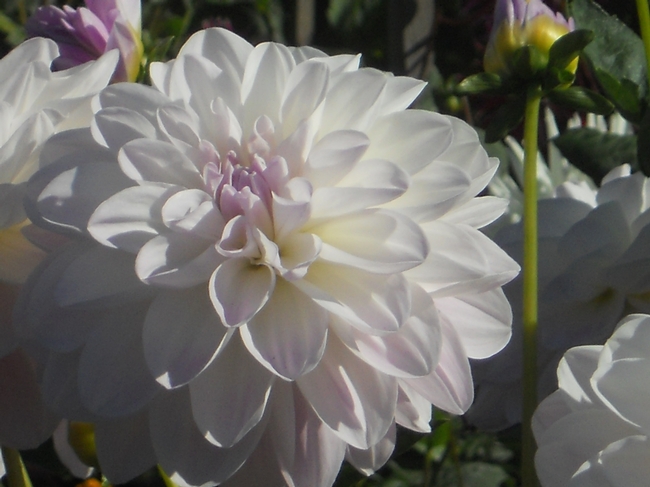
Dahlia.
When Contemplating Biocontrol of Pests
What are the important considerations when contemplating the biological control of pests? That's one of the topics when the Northern California...

Lady beetle, aka ladybug, prowling for aphids on a blanket flower, Gaillardia. (Photo by Kathy Keatley Garvey)

Close-up of lady beetle, aka ladybug. (Photo by Kathy Keatley Garvey)
Sudfriedhof Cemetery
Recently my husband Keith and I were in Wiesbaden, Germany to visit "the world's greatest grandchild", Emily. While there, we made a pilgrimage to the Sudfriedhof Cemetery in search of the grave of Manfred von Ricthofen, alias the Red Baron, the World War 1 flying ace.
We had to wander for quite some time through the cemetery before we found it. I didn't mind spending so much time there because I was fascinated by the graves. Many of the graves or family plots were decorated. I'm not talking about a bouquet of flowers. These plots were landscaped miniature gardens. Some had ground cover, shrubbery, bedding plants, and stepping stones; little postage stamp gardens.
Some were tended by families and others by gardening services. There were large water troughs and racks of watering cans scattered about in case you needed to supplement the natural rainfall. The whole effect was very peaceful and charming. We did finally locate the Baron's grave and Keith took lots of photos, but for me it was a little anticlimactic cause I had already taken these photos.

Graves with their gardens. (photos by Karen Metz)

grave 2
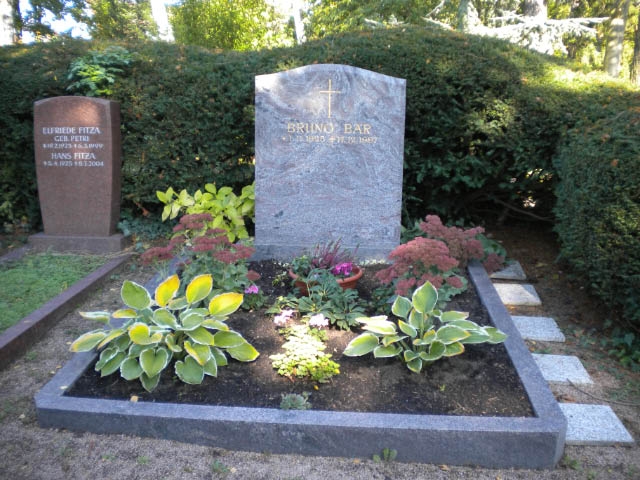
grave 3
UC's Desert REC celebrates 100 years
The agricultural and academic communities came together yesterday in Imperial County to celebrate the first 100 years of the University of California Desert Research and Extension Center, and to look toward the center's future, reported Imperial Valley Press.
The center was established in 1912 to address the Imperial Valley’s unique agricultural challenges. Its areas of research include irrigation and drainage, pest management and crops that would thrive in the desert, wrote reporter Antoine Abou-Diwan.
At the centennial celebration, Imperial County Supervisor Ray Castillo praised the center and presented a proclamation.
“Agriculture will continue to be the backbone of the Imperial County,” he said. “The Board of Supervisors hereby congratulates the University on the 100th anniversary.”
Know Your State Insect(s)
Quick, what's the state insect of South Dakota? If you answered "the European honey bee," you're right. The honey bee (Apis mellifera) is also the...
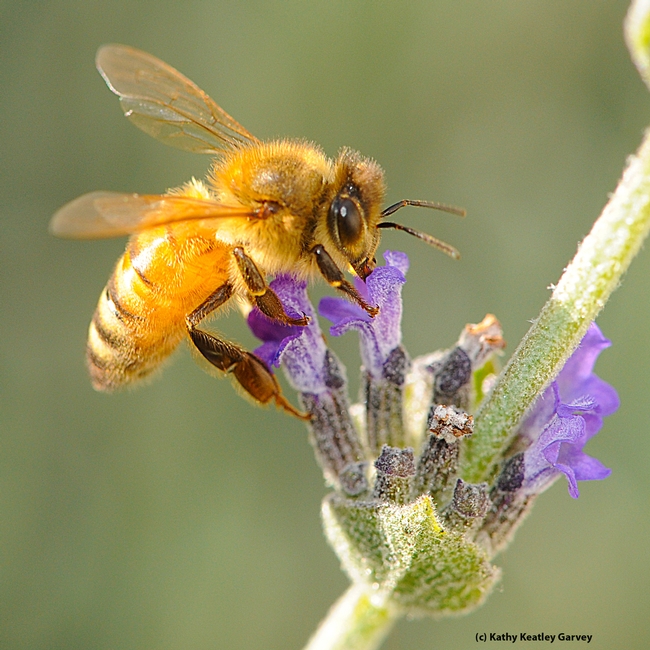
A golden honey bee nectaring lavender. Seventeen states list the honey bee as their state insect. (Photo by Kathy Keatley Garvey)
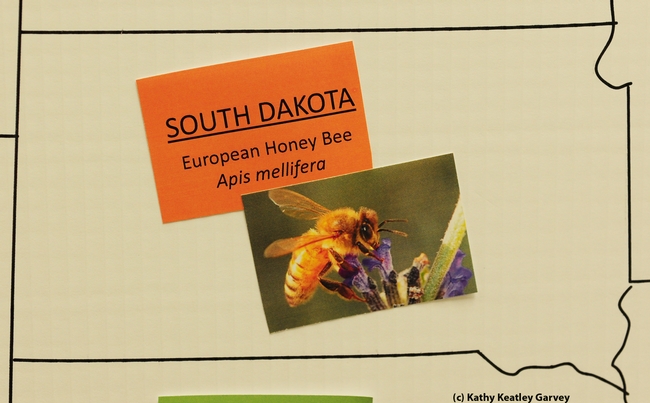
Honey bee decorates the map of South Dakota, signifying it's the state insect. (Photo by Kathy Keatley Garvey)
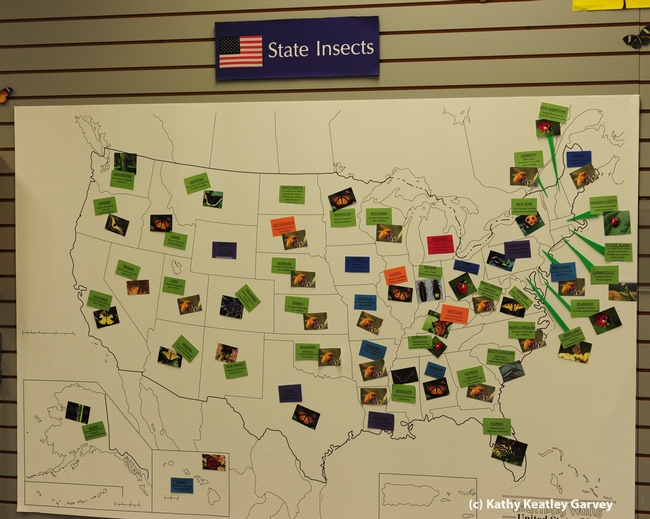
U.S. map at the Bohart Museum shows the states with state insects. (Photo by Kathy Keatley Garvey)


